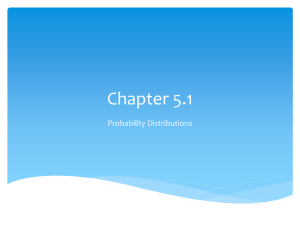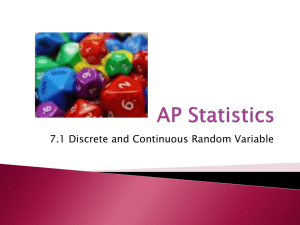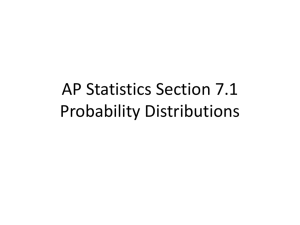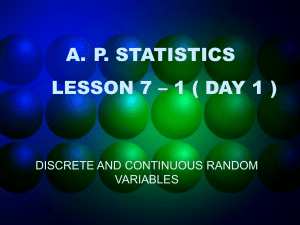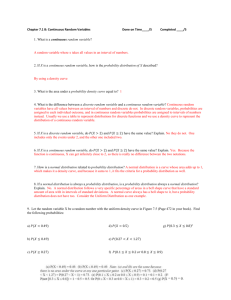Discrete & Continuous Random Variables: Lecture Notes
advertisement
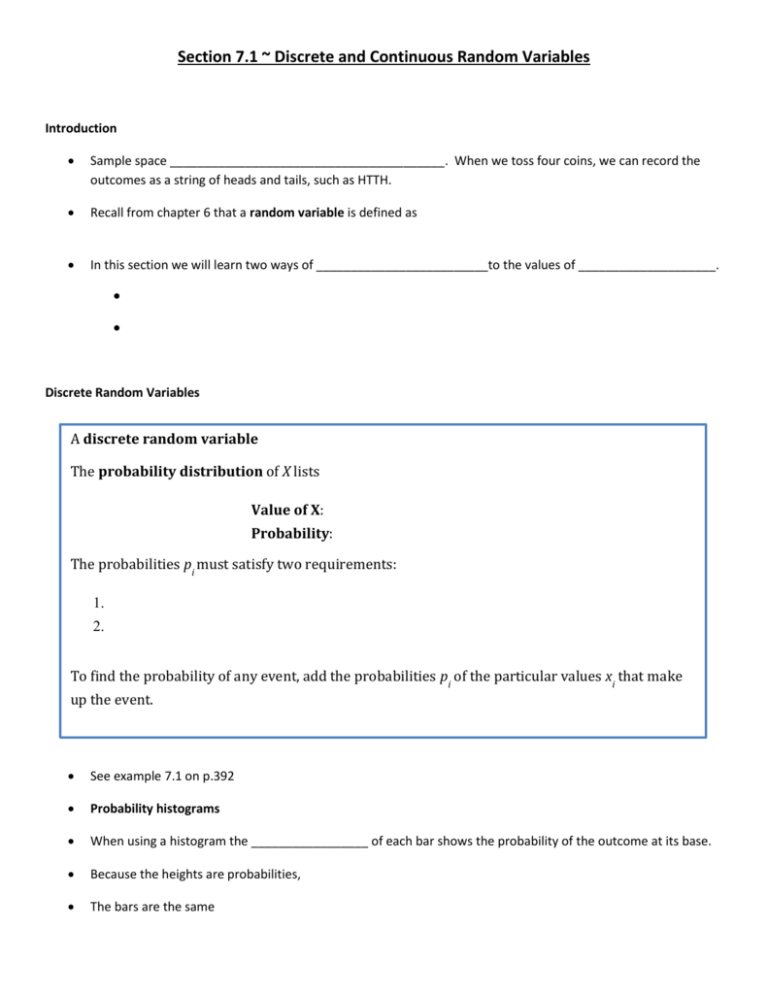
Section 7.1 ~ Discrete and Continuous Random Variables Introduction Sample space ________________________________________. When we toss four coins, we can record the outcomes as a string of heads and tails, such as HTTH. Recall from chapter 6 that a random variable is defined as a variable whose value is a numerical outcome of a random phenomenon. In this section we will learn two ways of _________________________to the values of ____________________. Discrete Continuous Discrete Random Variables A discrete random variable X has a countable number of possible values. The probability distribution of X lists the values xi and their probabilities pi: Value of X: x1 x2 x3 … Probability: p1 p2 p3 … The probabilities pi must satisfy two requirements: 1. Every probability pi is a number between 0 and 1. 2. The sum of the probabilities is 1. To find the probability of any event, add the probabilities pi of the particular values xi that make up the event. See example 7.1 on p.392 Probability histograms can be used to display probability distributions. When using a histogram the _________________ of each bar shows the probability of the outcome at its base. Because the heights are probabilities, they add up to 1. The bars are the same width. See example 7.2 on p.394-395 Continuous Random Variables A continuous random variable X takes all values in an interval of numbers. The probability distribution of X is described by a density curve. The probability of any event is the area under the density curve and above the values of X that make up the event. See example 7.3 on p.398 For continuous random variables, we assign probabilities directly to events – as areas under a density curve. Any density curve has area _____________________________, corresponding to total probability 1. All continuous probability distributions assign probability of 0 to every individual outcome. Read p.399 for an explanation We can ignore the distinction between _________________ when finding probabilities for continuous random variables.


